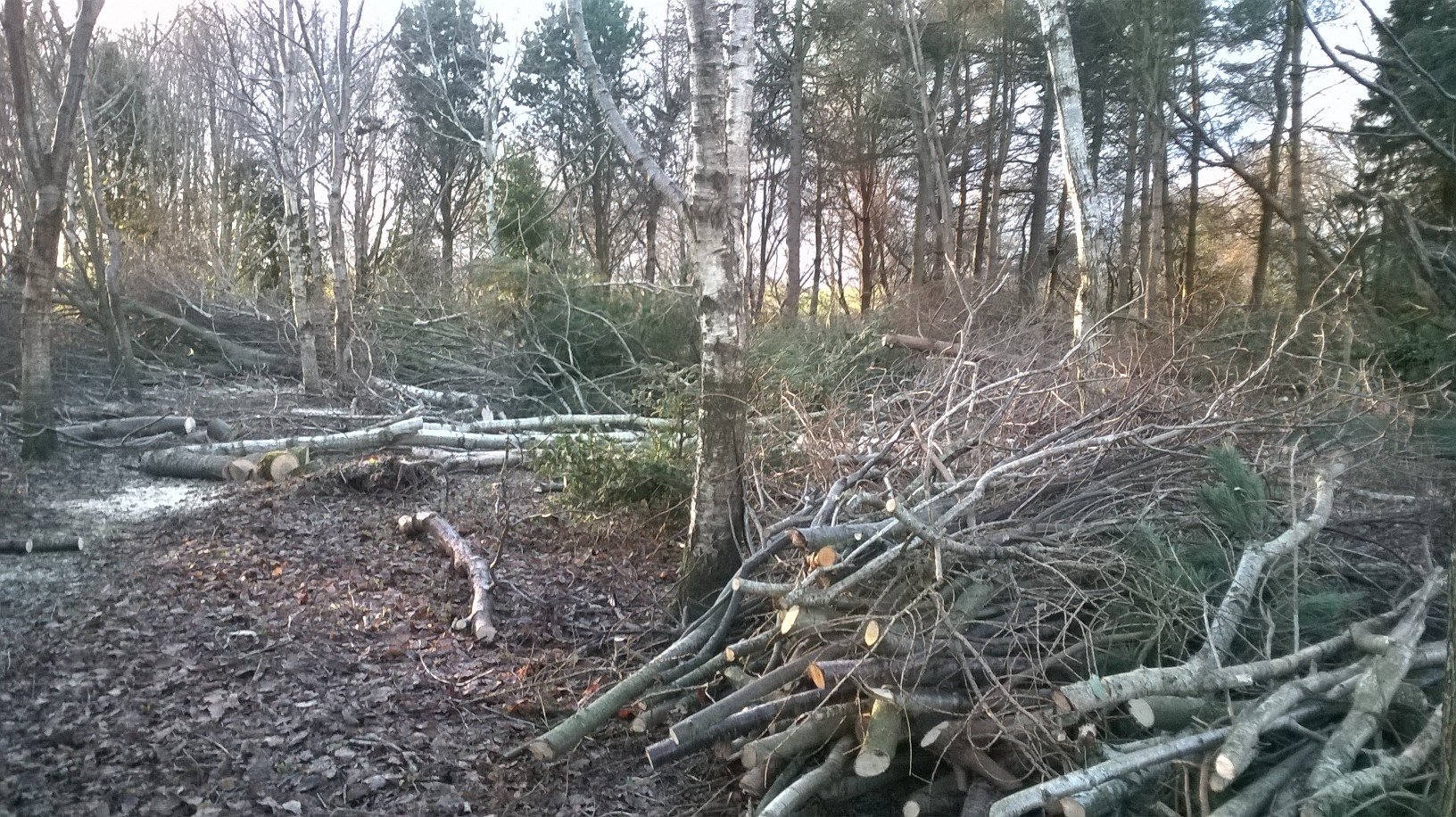Large-leaved rhododendron species require a woodland environment in order to thrive. The trees provide shade, some wind protection and a reduced risk of frost damage; temperatures recorded at the bottom of the wood can be 4 degrees C higher than those in the yard. Achieving the optimum balance between shade and exposure is problematic, since a certain amount of light is required to ensure flowering. For many enthusiasts the exotic foliage provides enough reward, with the flowers constituting a bonus, the icing on the cake. Others want to have their cake and eat it.
Each year we look at the pines and larches towering above our ericaceous buddies and wonder whether it would be possible to fell one or two in order to give the rhododendrons a better chance of firing on all cylinders. The problem, of course, is managing to drop a fifty-foot conifer without damaging the shrub layer. So each year we pass the buck.
Storm Arwen was less reticent. On the morning of 28/11/21 we discovered that we had seventy fewer trees than on the day before. This was by far the most powerful weather event that we have witnessed, though somehow we managed to sleep right through it. The forecast, however, had prepared us for the possibility of damage and so it was with a degree of trepidation that we opened the bedroom curtains.
The line of large oaks planted around 1985 that runs at right angles from the terrace on the south side of the house, looked different. The first tree in the row seemed unfamiliar, though at that point in the day neither of us commented on it. We moved to the kitchen in order to take a look at the Douglas fir in the corner of the vegetable garden. If any of our trees were going to suffer from strong winds then this one was most likely to be damaged. Almost every year this tree loses a branch, so a severe storm could have finished it off.
But no, it was still there, with just one of its three leaders somewhat shortened. Momentary relief was quickly replaced by the realisation that something else was missing. A sessile oak, planted in the mid-eighties and distinguished from many others in the garden by its habitual retention of autumnal foliage was lying prostrate along the edge of Ellen’s polytunnel. And from another window it was clear that some damage had occurred in the pinewood, though the extent of it was yet to be discovered.
In a previous blog I have recorded the trials and tribulations of the shelterbelt that surrounds the two acres added to the garden in 2015. We thought we should begin our investigation of the Arwen aftermath here, expecting more chaos. And yes, eighteen trees had either been blown over or dislodged, many of them re-staked after previous gales but now consigned to the firewood pile. But the visual effect of these losses was minimal as the survivors far outnumbered the casualties.
On moving round to the 1990 woodland, however, we began to realise what ‘being in shock’ actually feels like. A large hole had been blown out – oak, birch, lime, pine and larch, snapped off, uprooted, on the ground, hanging on the remaining trees. Utter mayhem. And underneath the conifers, a collection of rhododendron species lay almost completely hidden by the confusion of trunks and branches. Arwen had re-designed our garden.
Finally we arrived at the terrace and immediately realised why the view from the bedroom window had seemed strange. That first oak in the row was previously the second. The closest one to the house lay sprawled across a section we call the Med bed, having just missed the corner of the pergola, crashing through a fence and landing more or less square across a very fine Rhododendron ‘Graziela’, and uprooting the first two layers of steps leading up from the garden.
It would have been easy to despair but, as we frequently tell ourselves, crofters are tough. We hit on a plan of action which, two months later, is almost completed. By some extraordinary coincidence we had taken delivery of a chipper/shredder just two weeks prior to the storm – the first we have ever owned. We had also just acquired two new chains for the saws; and fortunately had the resources to obtain a log splitter, again, the first to be part of the Airdlin kit. The outgoings, we calculated, represented a fraction of what would have been needed to pay a contractor to do the work. So with all of that plus our two-wheeled tractor, mini-digger and Tirfor winch, the intrepid septuagenarians have made good.
Damage to the rhododendrons is surprisingly minimal. Light levels in the conifer wood have increased dramatically, but there is still plenty of shelter around the edges. Arwen has achieved what we have not dared to do. Come and have a look. Contrary to my last blog we will be opening the garden again this year, first weekend in June, full details on the SGS website.







